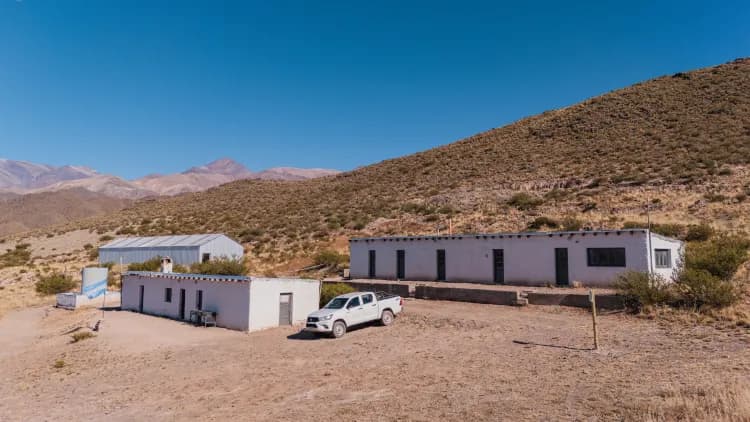Driven by a partnership between the Ministry of Production, the UNCA Vocational School, and G&C Andalgalá Perforaciones, the course trained 50 local young people through hands-on instruction and official certification.
By Panorama Minero
On Thursday, June 26, the “Driller’s Assistant Course” came to a close — a joint initiative of the Ministry of Production and Labor of Catamarca, the Vocational School of the National University of Catamarca (UNCA), and the company G&C Andalgalá Perforaciones. The program began on April 16, receiving over 350 applicants and selecting 50 participants, who completed a total of 200 hours of theoretical and practical training.
Organized within the framework of the Labor Training Campus, the course combined classroom instruction with fieldwork at G&C’s facilities, covering equipment installation and maintenance, workplace safety, and hygiene practices. UNCA, through its Office of Extension’s Vocational School, provided support and contributed personal protective equipment (PPE) to ensure safe hands-on practice for all trainees.
Institutional Participation and Official Support
The course’s opening and closing ceremonies were attended by authorities from the Ministry of Labor, Production and Planning, as well as representatives from UNCA and G&C Andalgalá Perforaciones. Speakers emphasized the importance of promoting employability in Catamarca’s interior regions and bridging the gap between the mining sector’s demand and available workforce training.
Remarks from Miguel Sandoval
Lic. Miguel Sandoval, Director of Labor Competency Certification at the Ministry of Labor, congratulated the participants: “First and foremost, congratulations to all of you for your commitment… you were selected and you completed the course. A huge thank-you to G&C… what you’ve seen and learned here — you wouldn’t find anywhere else.” He also highlighted the vital role of the technical instructors, stressed the future value of the official certificate, and committed to ensuring its timely issuance.
Perspectives from G&C and the Vocational School
G&C manager Cristian Gómez introduced Professor Sandra Barros, UNCA’s delegate representing the Vocational School, and emphasized: “Hands-on training is essential… these are the tools we need to enter the workforce.” He reiterated his thanks to the Ministry, UNCA, and G&C for their social and technical commitment.
Participant Perspectives
Clara Moreno, a Mining Processes student, shared her appreciation for the training: “I didn’t really understand in depth what it meant to work in drilling… they explained everything very well… the hands-on practice was also excellent… I hope to keep participating.” Another participant reflected: “We feel ready to work for any company… we’ve gained so much more knowledge… it’s the dream of many.”
From Inside G&C Andalgalá Perforaciones
Managers Luis Chayle, Jorge Gómez, and Cristian Gómez agreed that teaching is not as simple as doing the work itself, and recognized this experience as a two-way learning process. Jorge Gómez, who has spent decades in the trade across Argentina, said he was always self-taught and now finds it gratifying to “give something back” to local youth.
They also called on the government to help strengthen connections with mining companies in Catamarca, allowing them to expand operations and support the hiring of graduates in provincial and national mining projects.
Conclusion and Future Outlook
The course concludes as a successful model of public–private–academic collaboration, delivering tangible results in technical education and real employment prospects. The Ministry, UNCA, and G&C expressed their willingness to replicate the experience and expand the range of training programs offered within the Labor Training Campus.
The closing of the Driller’s Assistant Course in Andalgalá shows that high-quality technical training, coordinated among industry, universities, and the state, can truly transform lives. Graduates not only gain real knowledge and hands-on practice, but also receive an official certification that validates their qualifications in the job market — a key tool for regional development and for including youth from rural areas in the mining industry.


























